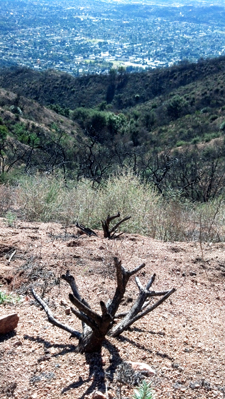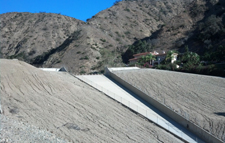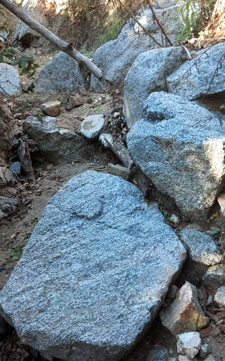Debris flow and debris basin management impacts on water quality
Summary:
Debris flows in the mountains of southern California pose acute hazards to local populations and may have far reaching water quality effects. Although debris flows in urban areas are contained in part by basins constructed to impound sediments, fine sediments are routinely discharged, and little is understood about the impacts of these sediments on downstream water bodies. For this project, we monitored water and sediment discharge from waterways to quantify suspended sediment impacts. The results of this study will be used to help local management agencies enhance debris basin management in terms of water quality.
Investigator:
Andrew Gray
Assistant Professor, Department of Environmental Sciences
UC Riverside
Project description:
Debris flows are fast moving masses of solids and water that occur when steep terrain cloaked in unstable sediments are exposed to high intensity rainfall. Expansion of urban populations and infrastructure in places like southern California has progressed beyond surrounding mountainous fronts, exposing large populations to the direct hazards of debris flows and their concomitant impacts on water quality.
A timely example of this phenomenon is the case of the City of Glendora, CA, which is situated at the base of steep slopes along the southern front of the San Gabriel Mountains and has historically experienced costly and damaging debris flows. Like many steep drainages near urban areas in southern California, the outlets of most catchments above Glendora are fitted with debris basins to impound coarse sediment. However, the water flux from these debris basins also transports fine sediments off site, as well as coarse sediments depending on debris basin management during and after storm events.
We instrumented the watershed to monitor rainfall and sediment transport to investigate how the interactions of atmospheric, wildfire, and hydrologic events result in the triggering and propagation of debris flows. For this project, we monitored water quality in particular to gauge the impact of post-fire debris flows on downstream fluvial systems, particularly in terms of fine suspended sediment, which is the most prevalent cause of water body impairment in California. This work is essential to better managing the water quality implications of debris flows in southern California, and resulted in tangible products informing local populations, stakeholders, and agencies about debris basin management.



All photos courtesy of A. Gray.
